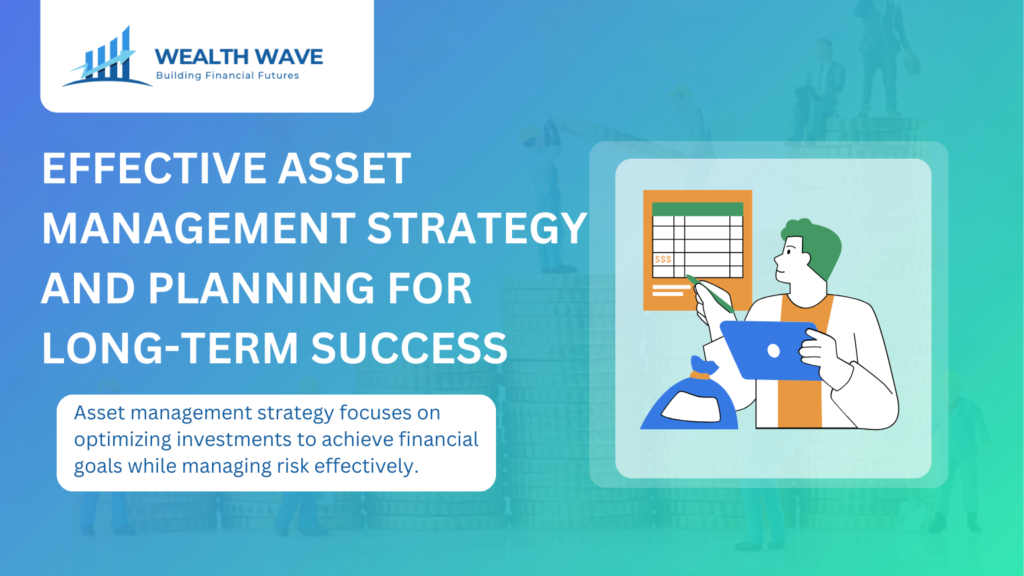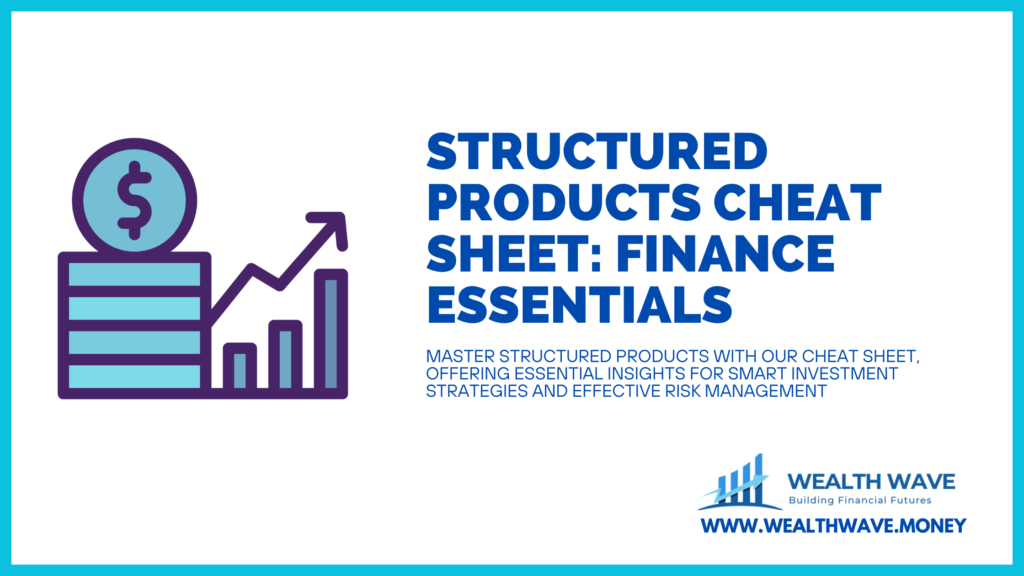
Managing assets can feel like navigating a tricky maze at times. You might catch yourself pondering over how to keep everything in check without draining your wallet. Trust me, you’re not alone in this journey.
After rolling up our sleeves and diving into the nitty-gritty, we discovered the magic lies within an asset management strategy and planning—a blueprint for managing your business assets effectively.
In this piece, we’re excited to unfold what we’ve gathered about strategic asset management and planning. From tidying up your asset inventory to making sense of life cycle costs, we’ve got it all covered.
We’re here to arm you with insights that aim to streamline your management processes while pocketing some savings along the way. So gear up for a ride through some genuinely helpful tips!
Key Takeaways
- Asset management strategy optimizes the lifespan of assets with data-based decision-making. This approach guides organizations to manage their resources more effectively and economically.
- Implementing an asset management plan involves identifying critical assets, prioritizing them based on value, and deploying tools like EAM & CMMS software to monitor asset performance.
- Strategic asset management supports sustainability by ensuring that the management, upgrading, and disposal of assets consider environmental impacts. It also helps in making informed decisions that align with organizational goals.
- Regular evaluation and review of data are necessary for improving asset management strategies. This process helps in adjusting plans to meet changing market conditions and organizational needs.
- Gaining support from all stakeholders is crucial for successful asset management planning. Clear communication about the benefits of strategic planning encourages involvement and commitment across the organization.
What is Asset Management Strategy?

An asset management strategy focuses on the effective management of physical assets. It helps organizations maximize value while minimizing risk and cost over time.
Purpose and scope

We define the purpose and scope of our asset management strategy as a means to outline our high-level goals for asset ownership. This strategy guides us in creating a long-term asset maintenance plan.
It allows us to assess and optimize asset conditions more effectively. By establishing clear protocols, we ensure that our approach aligns with strategic asset management (SAM) principles.
Our framework supports systematic asset management planning. It helps us develop, operate, maintain, and upgrade our physical assets cost-effectively. This systematic process clarifies our asset management priorities.
We aim to meet our wider organizational goals through careful investment planning and risk management.
Scope in document hierarchy

An asset management strategy fits into a broader document hierarchy. This hierarchy includes various plans and frameworks. Strategic asset management (SAM) operates within this structure.
It uses data-based decision-making to guide our asset ownership goals. We establish an asset management plan to detail how we manage infrastructure and assets. This strategic document clarifies our priorities in managing assets effectively.
It explains how asset management planning aligns with our organizational goals. By prioritizing our approach, we ensure cost-effective management over the asset lifecycle. Now, let’s explore the benefits of strategic asset management.
Benefits of Strategic Asset Management

Strategic asset management brings many advantages. It helps us optimize the lifecycle of our assets and aids in making informed decisions that promote sustainability.
Optimizing asset lifecycle

We optimize the asset lifecycle by focusing on data-based decision-making. This allows us to extend the lifespan of our assets effectively. Our strategic asset management (SAM) framework guides us through each phase of the asset’s life.
We assess each asset’s condition regularly. This helps us make informed choices about maintenance and upgrades. By creating a long-term asset maintenance plan, we ensure our resources remain productive and cost-effective.
We also enhance our asset management planning process. This systematic approach supports us in managing lifecycle costs and maximizing value. Our strategy clarifies priorities and aligns them with our organizational goals.
Making better decisions
Optimizing asset lifecycles leads us to making better decisions. An effective asset management strategy helps us clarify our priorities. We focus on data-based decision-making, which is essential for our strategic asset management.
This clear framework allows us to systematically assess our assets. We can then evaluate costs and benefits accurately.
Better decisions enhance our asset management planning. By leveraging information, we improve our financial strategy. We prioritize assets based on their condition and performance.
This strategy not only optimizes our asset lifecycle but also supports our broader goals. A well-structured asset management plan guides our actions and decisions efficiently.
Supporting sustainability
Strategic asset management directly supports sustainability. It helps us optimize the lifespan and value of our assets. Using a systematic approach, we create an asset management plan.
This plan guides us in maintaining, upgrading, and disposing of assets. It allows for cost-effective management while considering environmental impacts.
By focusing on sustainability, we align our asset management framework with broader organizational goals. We can better manage risks and ensure safety. This proactive strategy not only reduces costs but also enhances our commitment to sustainable practices.
As we adopt databased decision-making, we contribute to a greener future while ensuring our assets provide long-term value.
Managing risk and ensuring safety
Managing risk and ensuring safety plays a crucial role in our asset management strategy. We identify critical assets to prioritize their safety and performance. Our approach focuses on systematic processes that maintain and upgrade assets cost-effectively.
We utilize data-based decision-making to make informed choices about asset allocation and management. By implementing these strategies, we minimize risks and enhance safety measures across our organization.
Safety concerns often arise during the asset lifecycle. We prioritize safety by regularly evaluating asset conditions. This proactive management enables us to address issues before they escalate.
Moreover, our asset management plan outlines clear procedures for handling risks. This strategy not only protects our assets but also supports sustainability efforts. Through effective monitoring, we ensure that we meet our established levels of service and enhance our overall asset management planning.
Improving reporting
Improving reporting plays a vital role in our asset management strategy. An effective asset management plan clarifies our priorities and helps us track performance over time. Through strategic asset management (SAM), we rely on data-based decision-making to enhance our reporting accuracy.
This precision leads to better insights into our assets’ condition and performance.
We notice that effective reporting supports cost-effective management and aids in financial planning. Our focus on clear communication allows us to share crucial information with stakeholders.
With well-structured reports, we can demonstrate the value of our investments, ensuring we meet our organizational goals.
The Asset Management Strategy Development Process

The Asset Management Strategy Development Process helps us identify and prioritize our essential assets. We create a thorough plan to manage these assets effectively, ensuring we respond to ongoing changes in the market.
Identifying critical assets
Identifying critical assets is crucial for effective asset management strategy and planning. This process allows us to focus on the assets that significantly impact our organization’s goals.
We need to categorize these assets based on their value and importance. This helps in prioritizing our efforts and resources. A strategic asset management plan clarifies these priorities while aiding in cost-effective management practices.
By determining which assets are essential, we can optimize asset lifecycle management. This supports better decision-making and enhances overall sustainability.
Next, we will explore how to prioritize these assets effectively.
Prioritizing assets
Prioritizing assets is crucial for effective asset management. We can assess which assets are critical to our operations. This assessment helps us understand asset value and risk. By focusing on high-priority assets, we can optimize their lifecycle and support cost-effective management.
Furthermore, this prioritization helps in making better decisions about resource allocation. We should regularly review our priorities to adapt to changing needs. A strategic asset management plan keeps our goals aligned with broader organizational objectives.
This alignment ensures that our asset management activities contribute to overall success.
Developing an asset management plan
We develop an asset management plan to guide our asset management activities. This plan serves as a strategic document that outlines our approach to managing our organization’s infrastructure and assets.
It details the systematic process for developing, operating, maintaining, upgrading, and disposing of assets cost-effectively. By identifying critical assets, we prioritize their importance in our overall strategy.
We then gather data to support our decisions. This databased decision-making ensures that we optimize the lifespan of our assets.
Creating this plan clarifies our asset management priorities. It helps us align our practices with wider organizational goals. We focus on cost-effective management and support sustainability throughout the process.
This careful planning leads to better resource allocation and risk management. Now, we move on to implementing an asset management strategy.
Evaluating and reviewing data
We evaluate and review data regularly to enhance our asset management strategy. This process allows us to optimize the lifespan of assets and make informed decisions. By using data-based decision-making, we can identify trends and patterns that help us prioritize critical assets.
We focus on the effectiveness of our asset management plan.
Our systematic approach to planning includes assessing asset conditions. This way, we ensure our strategy supports cost-effective management. Regular reviews help us align our goals with organizational priorities.
We stay ahead in portfolio management and capital management by closely monitoring results and making adjustments as needed.
Ensuring support and buy-in
Ensuring support and buy-in is vital for success in asset management strategy development. We need to involve all key stakeholders early in the process. This engagement fosters a sense of ownership and commitment.
We share our vision clearly and show how it aligns with our organization’s goals. A strategic asset management plan outlines our asset management priorities and practices. This clarity helps everyone understand their role in achieving our objectives.
We also focus on the benefits of strategic planning. Highlighting how cost-effective management can optimize the asset lifecycle encourages participation. Emphasizing the importance of data-based decision-making boosts confidence in our approach.
By clearly communicating these points, we secure the support necessary for effective asset management planning.
Implementing an Asset Management Strategy

Implementing an asset management strategy requires the right tools and processes. We can use EAM and CMMS software to streamline operations, monitor assets, and communicate results effectively.
Using EAM & CMMS software
EAM and CMMS software play a vital role in our asset management strategy. These tools help us manage our assets more efficiently. We can track asset conditions and optimize their lifecycles with data-based decision-making.
This approach supports our long-term asset maintenance plan. Using these systems makes it easier for us to gather, analyze, and review data effectively.
These programs also aid in cost-effective management. By prioritizing asset care, we improve reporting and ensure safety. Our strategic asset management plan benefits greatly from these technologies.
They allow us to monitor progress and communicate results effectively. Adopting EAM and CMMS software strengthens our investment strategy and retirement planning efforts.
Role of ToolSense
ToolSense plays a crucial role in our asset management strategy. This software streamlines data-based decision-making. It helps us optimize the lifespan and value of our assets. By using ToolSense, we enhance our asset management planning process.
We create a long-term asset maintenance plan with ease. This improves asset condition assessment and supports cost-effective management.
With ToolSense, we can monitor and communicate results effectively. The software allows us to prioritize critical assets and develop an actionable asset management plan. It supports us in making better decisions while managing risks and ensuring safety.
ToolSense ultimately aligns with our strategic asset management goals and strengthens our organization’s overall performance.
Monitoring and communicating results
We monitor and communicate the results of our asset management strategy regularly. By using EAM and CMMS software, we can track the performance of our assets effectively. This monitoring allows us to make data-based decisions that optimize the lifespan of our assets.
We share these results with all relevant stakeholders. Clear communication builds trust and ensures everyone understands our progress. It also helps us address any issues quickly. Our strategic asset management plan clearly outlines our priorities and practices.
This plan guides us in achieving our broader organizational goals. The next step involves developing an asset management plan that aligns with our strategy.
Conclusion

We explored asset management strategy and planning in depth. This strategy helps us maintain our assets effectively. We can optimize their lifespans and improve decision-making with data-driven insights.
Implementing these strategies leads to cost-effective management and supports sustainability. We encourage everyone to adopt these practices for better outcomes.
FAQs
Q1. What is asset management strategy and planning?
Ans. Asset management strategy and planning involves making cost-effective decisions about how to manage wealth based on data.
Q2. How does databased decision-making play a role in asset management?
Ans. Databased decision-making allows for more informed, strategic choices in wealth management by using hard facts instead of assumptions.
Q3. Why is cost-effective management crucial in asset management?
Ans. Cost-effective management ensures that resources are used wisely, maximizing the value of your assets while minimizing unnecessary expenses.
Q4. Can you explain how an effective asset management plan looks like?
Ans. An effective asset management plan uses databased decision-making to guide cost-effective strategies, ensuring optimal use of resources and maximized wealth growth.




